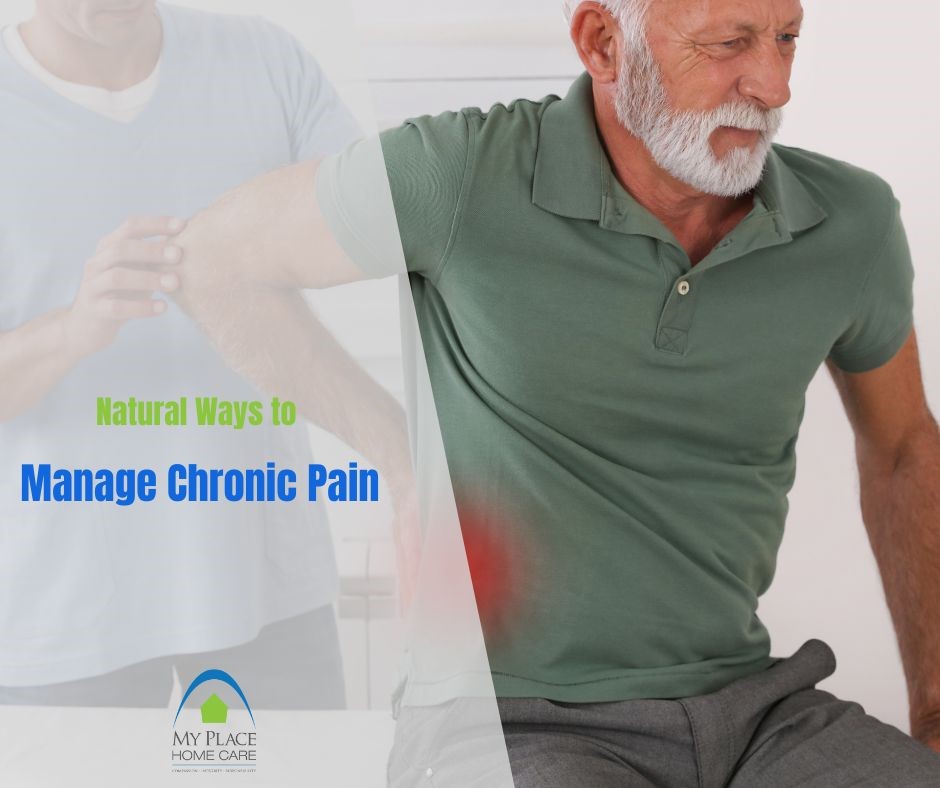
Natural Ways to Manage Chronic Pain
Day to day life can come to a halt while trying to manage chronic pain. There are days that feel like nothing will help to take it away. In this blog, we will explore natural ways to manage your chronic pain including the use of aromatherapy, physical activity, and naturopathy.
Aromatherapy
Aromatherapy refers to the medicinal or therapeutic use of essential oils absorbed through the skin or olfactory system. Essential oils are derived from plants and are used to treat illness as well as to enhance physical and psychological well-being. Essential oils are used for a variety of purposes such as pain relief, relaxation, to help reduce anxiety and symptoms of depression, improve sleep quality, and overall well- being. Many essential oils have anti-inflammatory properties that can be beneficial for pain management. Some of these oils are:
Lavender
Lavender is a versatile essential oil and can be used as an anti-inflammatory as well as an analgesic (pain reliever). It can be used in a multitude of ways including through inhalation, applied topically, or diluted with carrier oil and used in massage. Some studies have suggested that regular inhalation over an extended period helps reduce pain levels for persons experiencing chronic pain.
Peppermint
Peppermint is perhaps one of the oldest natural medicinal painkiller oils and is still one of the best pain-relieving oils. It can be used for muscular aches and pains, headaches, migraines, digestive pain, and other kinds of pain. When applied topically, you may experience a tingling sensation like the feeling you experience after applying Icy Hot or Bengay.
Eucalyptus
Eucalyptus oil can help reduce pain, swelling, and inflammation in the body. Studies have shown that eucalyptus oil relieves pain and increases quality of life in people with osteoarthritis and rheumatoid arthritis when participants inhaled the oil for 5 minutes, 3 times a day. When applying the oil topically, it is vital to dilute it in a carrier oil such as coconut or olive oil. It’s recommended to do a small skin test before applying topically to a larger area. There are additional benefits to using eucalyptus oil including suppressing a cough, clearing chest congestion, and easier breathing. This can be achieved by inhaling the oil via a diffuser.
Frankincense
Studies have shown that frankincense oil is an anti-inflammatory and a proven pain reliever that help alleviate chronic pain. It can be inhaled, but research has shown that it is most effective when applied topically using a carrier oil and massaged into the skin of the affected area. Due to its anti-inflammatory and analgesic properties, it is often recommended to persons with rheumatoid arthritis.
Ginger
Ginger oil is an incredibly versatile oil as it stimulates circulation, is used as a pain-reliever and is anti-inflammatory. It has many applications including treating debility, nervous exhaustion, rheumatoid arthritis, IBS, fibromyalgia, joint and muscle pain, as well as stomach pain. Overall, it is a great oil for chronic pain as recent studies have demonstrated how it can help persons with chronic knee pain. It is best used when applied topically with a carrier oil to the affected area.
Before using essential oils as part of your pain management program, it is very important to discuss it with your doctor or an aromatherapy professional. Remember, when researching these oils for pain management, be sure to use reputable sources.
Physical activity
Walking
Walking! Yes, walking. It is an exercise that is low impact on the body but still very effective. It helps decrease joint stiffness, reduces pain, promotes good mental health, lowers blood sugar levels, and can improve your overall health. Moreover, it can be done anywhere and at any pace you are comfortable with. You can simply start by walking up and down the hall, when you feel more comfortable, you can walk farther and for longer.
Body weight training
It may sound intimidating, but body weight training can be as simple as stair climbing or chair squats. These exercises can help prevent muscle loss which can be a cause of chronic pain. Increasing or maintaining muscle strength and balance as a senior is crucial in sustaining a healthy lifestyle and can be an alternative treatment for chronic pain.
Swimming
Swimming is a low impact form of exercise that offers softer, slower movements and allows the body to heal. It can be used to combat muscle and joint stiffness as well as back pain. It allows you to move all your muscles and joints while still being gentle on them. If you are not a strong swimmer, walking lanes are often available at your local pool and can offer similar benefits to swimming.
Yoga
Whether it is chair yoga or standing yoga, this spiritual practice focuses on breathing, simple meditation and specific body postures that promote relaxation and health. It is an activity that can be low impact and allows you to move at a slower pace. It can be beneficial as it has been shown to improve balance and strengthen muscles as well as improve overall mood.
Pilates
Pilates is a similar practice to yoga. It can be specifically helpful to those with back pain. It is a slow movement exercise that helps increase core strength and balance. Strengthening deep abdominal muscles offer more support for your back and will help reduce pain. Classes are often offered at gyms and there may be options for classes geared to seniors. If you cannot find a specific class, you can always go at your own pace. You Tube offers Pilates instructions geared towards pain management and seniors.
Naturopathy
Naturopathy, also called naturopathic medicine, is an alternative medicine based on the theory that diseases can be successfully treated or prevented without the use of drugs, by using techniques such as control of diet, exercise, and massage.
We know that what you eat fuels your body and gives you energy, but it also helps prevent and fight infection. If you are looking to help your body manage pain, it starts with altering your diet to ensure you are doing the most you can.
The principals of a naturopathic diet include eating plenty of plant-based foods including vegetables, fruits, culinary herbs and spices, whole grains, seeds (sprouts), nuts and legumes. If your regular diet doesn’t include many of these foods, begin small. Introduce more fruit and vegetables to your daily diet, especially berries as they have anti-inflammatory properties. Ginger and turmeric are known to help reduce pain and inflammation, try to add these flavours into regular
meals.
Massage is another way to help reduce pain. The combination of aromatherapy (essential oils mixed into massage oils) and massage can help reduce localized pain. In addition to it, acupuncture has proven to be very effective in chronic pain reduction especially when combined with different essential oils. Receiving acupuncture from a licensed professional may help reduce chronic pain in as few as 10 sessions.
Lastly, as discussed, exercise can be incredibly effective and can be as simple as walking. Getting the body moving with low impact exercise can reduce pain and improve your overall health. Managing chronic pain with natural treatments in conjunction with prescription medicines will take some time and you may go through some trial and error until you find the right balance. You may be thankful that you did if and when it improves your quality of life.
Get in Touch
We here at My Place Home Care care for your health, wellness, and safety. Looking to join us or enquire about our services? Tap the link for all details you would like to discover https://www.myplacehomecare.ca/
Contact us today by calling us at: 613-686-6366 or email us direct at: info@myplacehomecare.ca
You can use these links to APPLY NOW or CONTACT US.
You can also click here.

